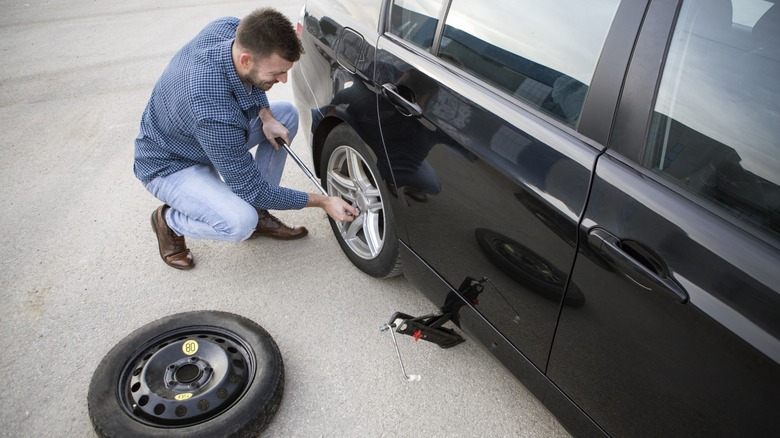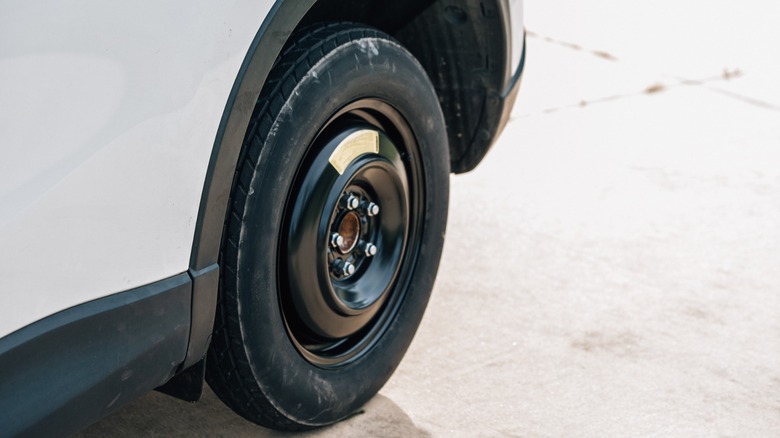How Long Can You Really Drive On A Spare Tire?
There's never a convenient moment to get a flat tire, but that's just the way of the world. So, the next time you find yourself breaking out the jack, wrench, and spare tire, take a minute to consider how far away the nearest shop is. Spare tires aren't built for long-distance travel, and they certainly aren't built for speed.
The most common spare tire is the infamous "donut." These are usually found in sedans and compact cars, and they get their name from their puffy, rounded appearance. Auto experts advise keeping your travel distance under 50 miles when driving on a donut. Any further, and you could run into trouble.
Even full-sized spares, like those in trucks and SUVs, have their limits. Many full-sized spares are thinner than the rest of the wheels, and they may even come from a different manufacturer. While they can support a greater load and travel further than donuts, full-sized spares aren't always a permanent fix. If yours has a different tread pattern, size, or shape than the rest of your tires, the 50-mile max range still applies.
Why spare tires have their limits
Surprisingly, the main reason for the limit isn't the risk of popping. Of course, spares are more susceptible to wear and tear than standard tires, and they can pop on the way to the shop. You'll have to drive slowly and carefully to avoid getting another flat. More important, however, is the damage that driving on a spare inflicts on your car.
Because most spares are shaped differently than the rest of the tires, they spin at a different rate. This rotational difference can strain the transmission, and you'll likely notice a loss of handling and traction (another reason to drive slowly). Even a minor difference in tread patterns can damage the differential, as the imbalance of torque heats up the drive line with each passing yard traveled. Driving on a spare won't destroy your car, but it might reduce how long your transmission will probably last.
Safety tips for driving on a spare
Spare tires reduce traction and handling. Where possible, keep your speed under 40mph, and absolutely do not exceed 50mph. The increased risks of spin-outs and skids simply aren't worth provoking. If you're on the highway, stay in the right lane. You can put on your hazards to let other drivers know you won't be overtaking them any time soon.
The weather also affects the spare tire speed limit. Rain, snow, high winds, and other inclement forces of nature should be respected with slower driving speeds. Should you need to cross potholes, unpaved roads, and anything else that might put excess pressure on the spare tire, slow down to a crawl. Donut tires are puffy because they have greater tire pressure than standard tires, so they can pop more easily.
With all the warnings out of the way, you can breathe easy. A spare tire won't turn your car into a death trap. Designed to get you back on the road and on your way to the nearest tire shop, even the noble donut should do the trick. As long as you follow these safety tips and keep your travel distance under 50 miles, your flat tire fiasco will soon be a memory.


